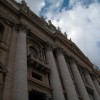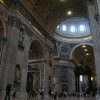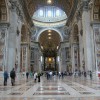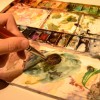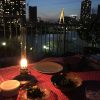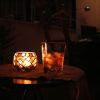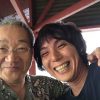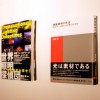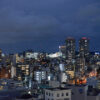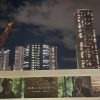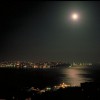Date of Issue:25 June, 2020
・Activity 1/Night Watching Tour:Oouchijuku
Let’s go look at lights on the snow-scape! (2020.02.08- 2020.02.09)
・Activity 2/World Lighting Journey 2019 Annual Report, A chief Interview(2020.02.26)
Night Watching Tour:Oouchijuku
Let’s go look at lights on the snow-scape!
2020.02.08- 2020.02.09 Namiko Watanabe + Noriko Higashi
In search for a festival of lights in Japan, we headed to the Winter festival at Oouchijuku. Our 19 members headed north from Tokyo towards a fantastical view of snow and the lights of the old villages houses.
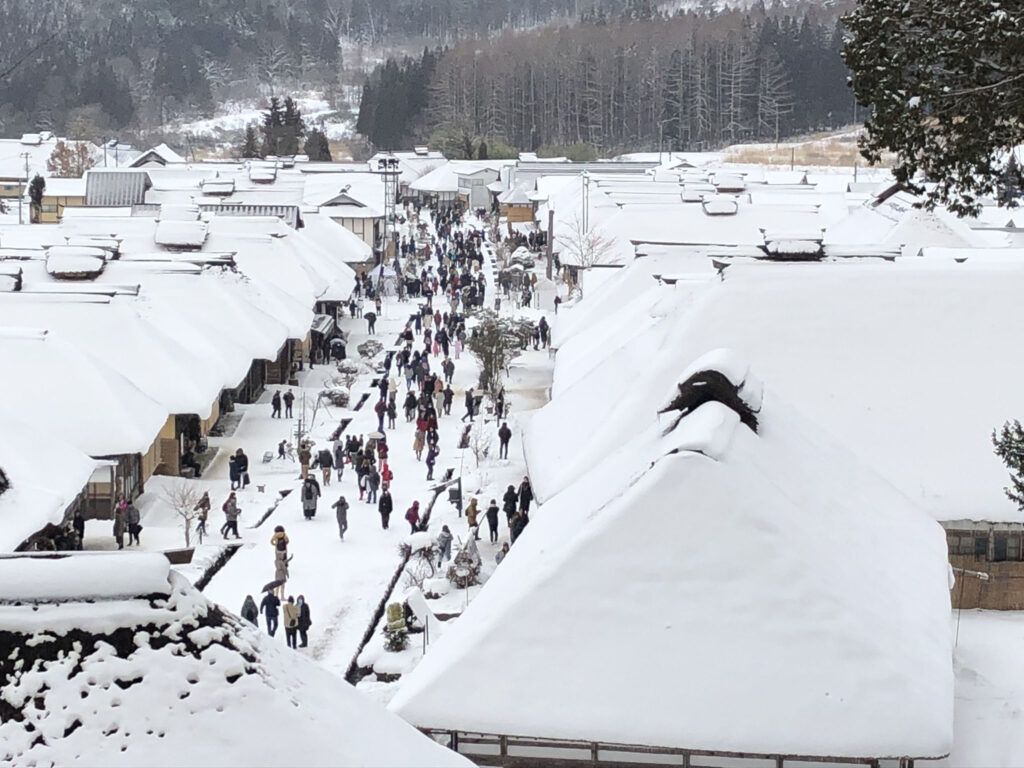 Looking down on Oouchijuku, we were lucky it started snowing the day before, barely creating a beautiful snowscape
Looking down on Oouchijuku, we were lucky it started snowing the day before, barely creating a beautiful snowscape
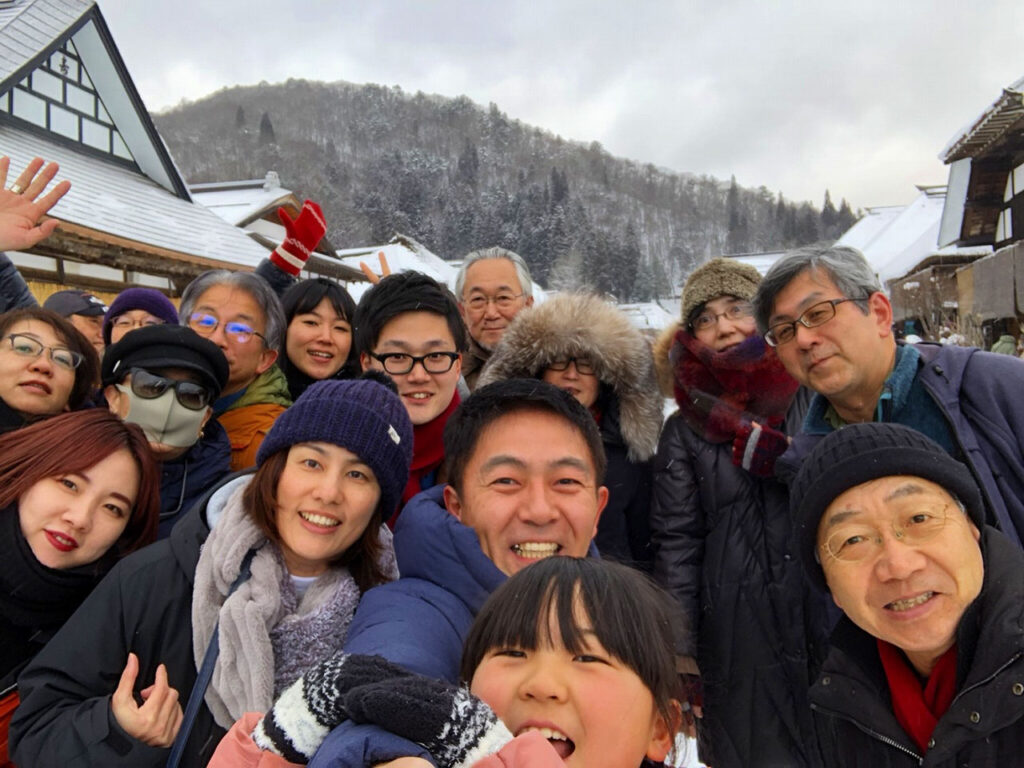
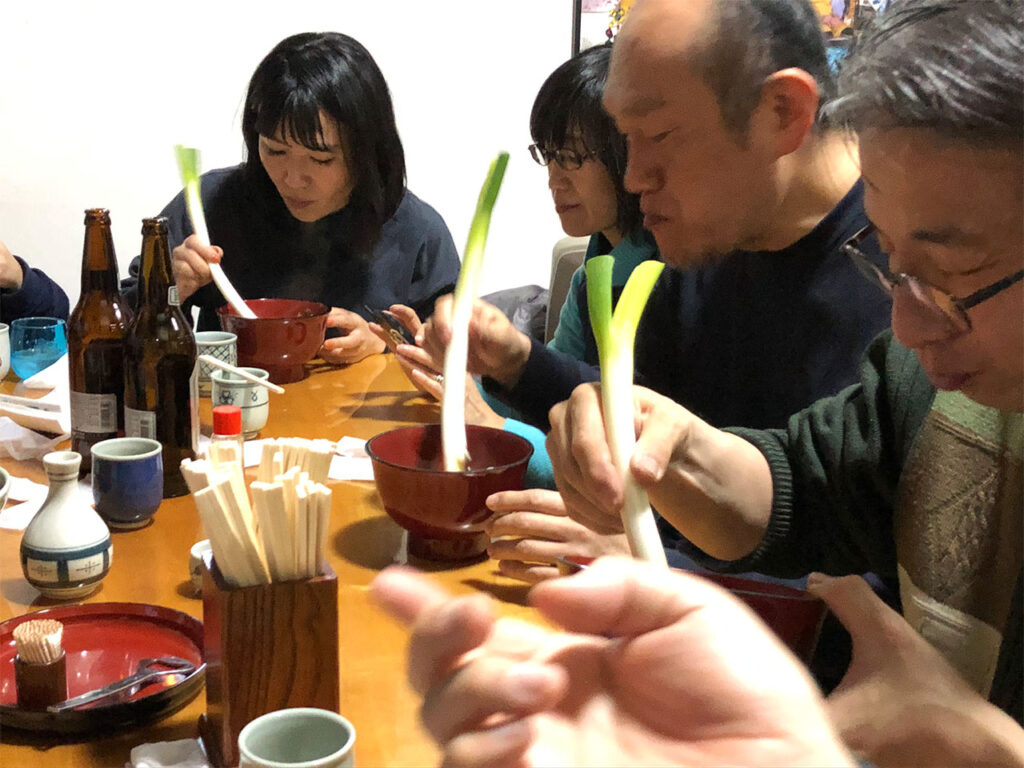 Oouchijuku cuisine – Green Onion buckwheat noodles- where we use green onions as our chopsticks
Oouchijuku cuisine – Green Onion buckwheat noodles- where we use green onions as our chopsticksLocated in South Aizu in Fukushima Prefecture, Oouchijuku prospered as a passing town on route from Nikkou to Wakamatsu in Aizu. It is a beautiful town, designated as an architectural cultural heritage, where cottages with thatched rooves still stand.
Our Night-watching tour planning committee, after lots of investigation decided upon this Winter Festival in Oouchijuku. Let us find out if we were able to glimpse the view we were promised!
■Tour Cancelled⁉
The theme of this tour is “Let’s go look at lights on the snow-scape!”.
Our goal for this tour was to go see the glimpse of warm light spilling out from cottages buried in the snow or as we like to think “THE Japanese Snow-scape and Cottage lighting”, but sadly this winter was an abnormally warm winter. It had not snowed even a week before the planned date for the tour.
A lot of the festivals were cancelled or shrunk in scale, resulting the Oouchijuku tourism board inquiring us about whether we wanted to continue with the trip, causing some stressful days of waiting.
While I watched the Livefeed camera set up in Oouchijuku with our new staff spearheading this tour, Watanabe, and I recollected about when we flew to Hachijo Island only to fly back because of the clouds that enveloped the island (VOL.81) or when we couldn’t see the stars because of fog in Achi village (VOL91), reminding me about the difficulty of planning with nature working against you. However, we were extremely lucky that it had started snowing the day before the tour to an extent where even the thatched roofing was covered in snow, and we gathered at Tokyo station.
■To Oouchijuku
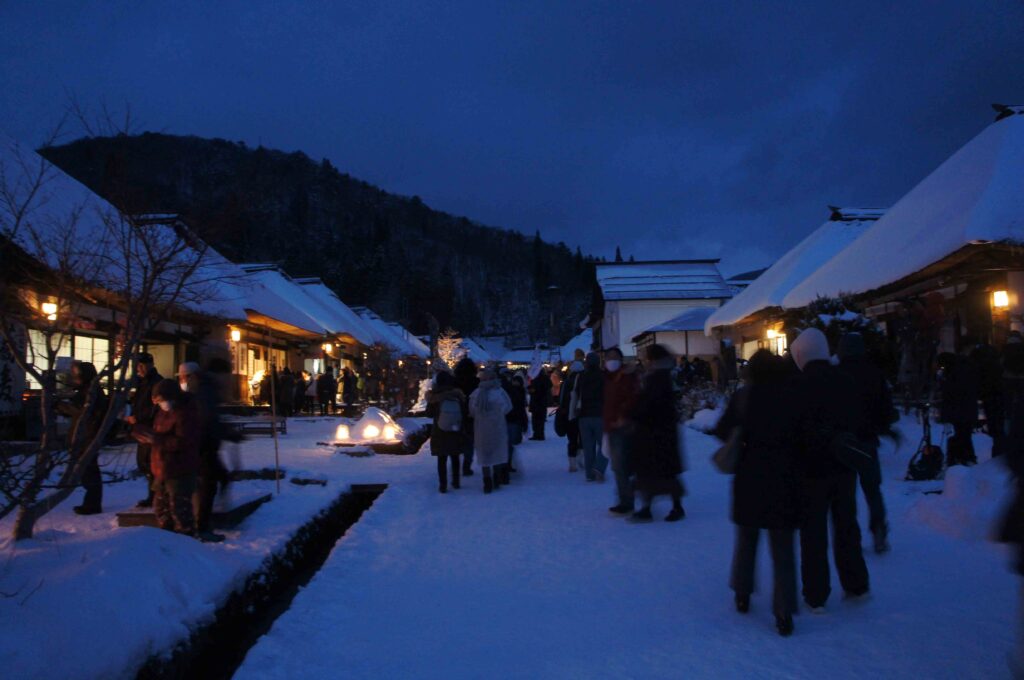 As the sky darkened, light seeped out of the townhouses and the Snow lanterns were lit
As the sky darkened, light seeped out of the townhouses and the Snow lanterns were lit
Our 19 participating members of the tour gathered at Tokyo station to take the bullet train to Kouriyamashi. There, we received the local delicacy Noriben (Dried Seaweed lunchbox), and ate on the bus. Without much traffic or trouble, we were able to arrive at Oouchijuku.
The cottages weren’t buried in snow per say but we were all satisfied to see the cottages that bring the taste of our old cultural heritage to the modern world.
We decided to look upon the village as a whole from atop a hill. With no modern buildings, it was as if the landscape had slipped back in time to the Edo-period. At the same time, I felt the painstaking work that goes into maintaining and passing this view down for the next generation. To maintain these cottages you have to gain money, and to gain money you have to advertise and create events that would attract tourists. Overdo it and you lose the old timey flavor that is your selling point. I can only imagine how much trial and error they had to do while threading this fine line.

Goshinkataika (Carrying Godly Fire) Running through the town with lit torches basically naked
Our team explored the village, ate some local cuisine of Negisoba (Green Onion Buckwheat noodle) and waited for our snow festival until sundown.As the sun set, the cottages lit up one after another, immediately heightening the mood of the festival. Lanterns made out of snow were lit and the scene is set. The main event of the festival is Goshinkataika (carrying godly fire) where men cross the village holding torches with only a fundoshi on.Watching the men run with fire in the snowing night sky makes me rethink my preconceptions. It made me believe as if the fire really did have powers to cleanse the heart and veer off evil spirits.
The festival finale are fireworks that soar above the thatched rooves of the cottages. The fireworks differ from the loud and exciting ones in the summer but are rather solemn due to the snow sucking up the noise. Perhaps it might be the plain mood that seeps from the village that made it so.
There were barely any streetlights or extensive light up of the cottages, and would be very dark without the snow lanterns, but it gave us a glimpse calm nights of the village. It was a night that soothed us with the natural antiquated beauty of a view of Japan many years ago.


 The finale to the festival: Fireworks. The loud noise of the fireworks is dampened by the snow and gives off a rather solemn demeanor in comparison to the loud and exciting fireworks in the summer.
The finale to the festival: Fireworks. The loud noise of the fireworks is dampened by the snow and gives off a rather solemn demeanor in comparison to the loud and exciting fireworks in the summer.
■Second day: Touring Wakamatsu, Aizu
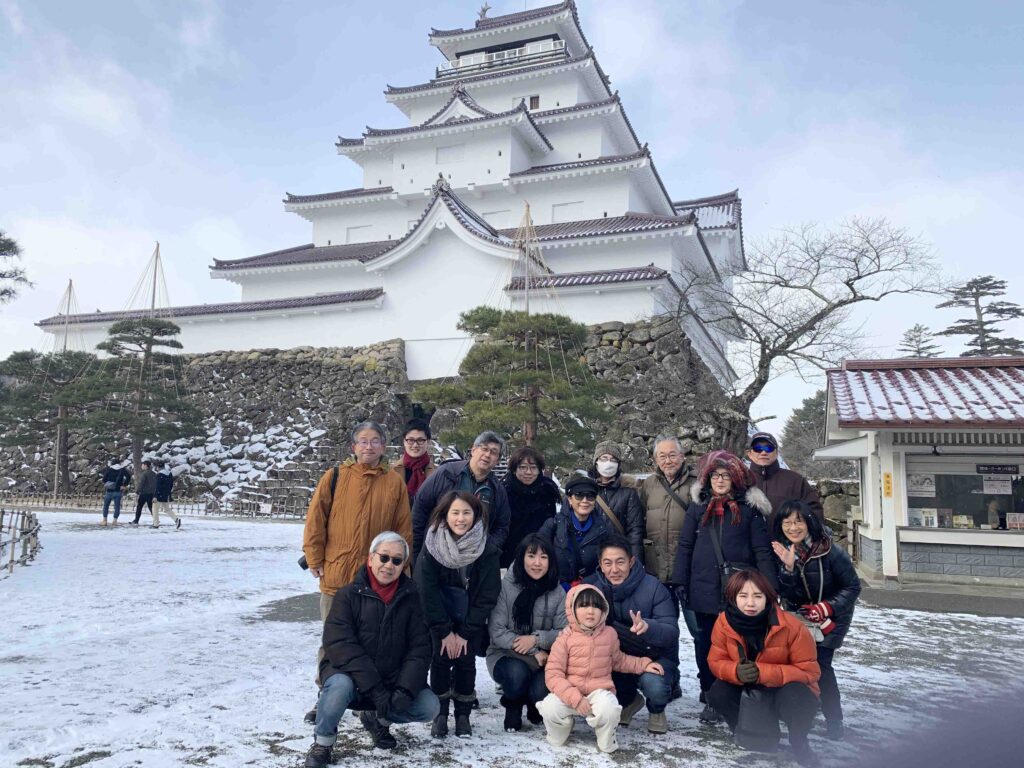
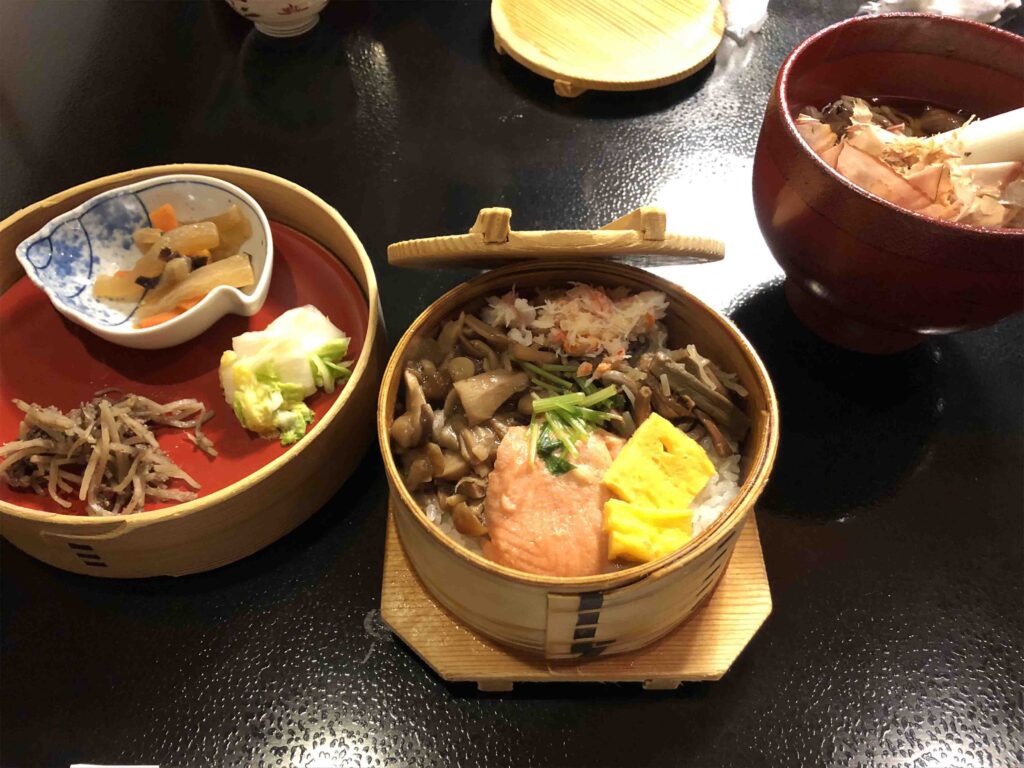
The next morning we spent in Wakamatu city in Aizu, by climbing the Tsuruga Castle, touring Nanukamachi, and enjoying the local delicacy of Wappameshi.
After lunch, we visited the other big spot on this outing – Sazaedou. It is a 16.5m tall, triple layered, hexagonal temple that was built in 1796 on Iimori Mountain. The passageway through it is a layered spiral slope that is designed to be a one-way passage. When it was built there were 33 Kannon Statues places along the slope, so you could view all 33 as you went up or down the temple and was popular among the peasants who could not afford to go to other temples.
After enjoying the snow-scape, onsen, delicious foods, and fine liquor, the team headed home. It is really a treat to get to spend time and go on trips with other individuals that appreciate architecture and lighting. Thank you to everyone who participated on this trip.
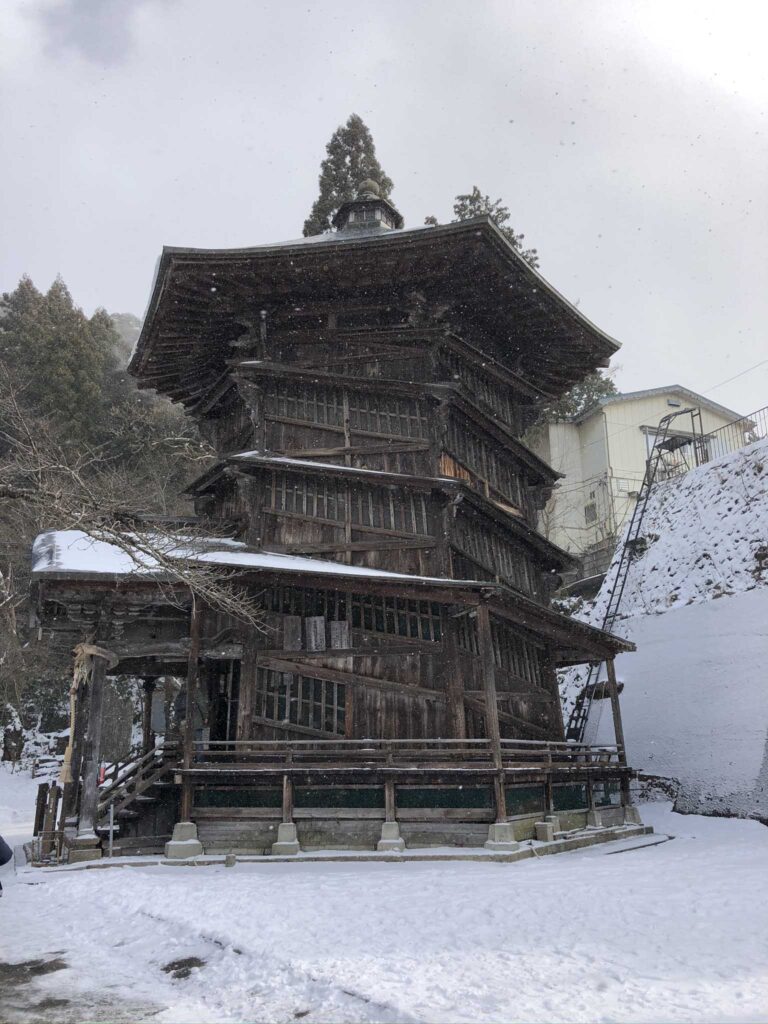
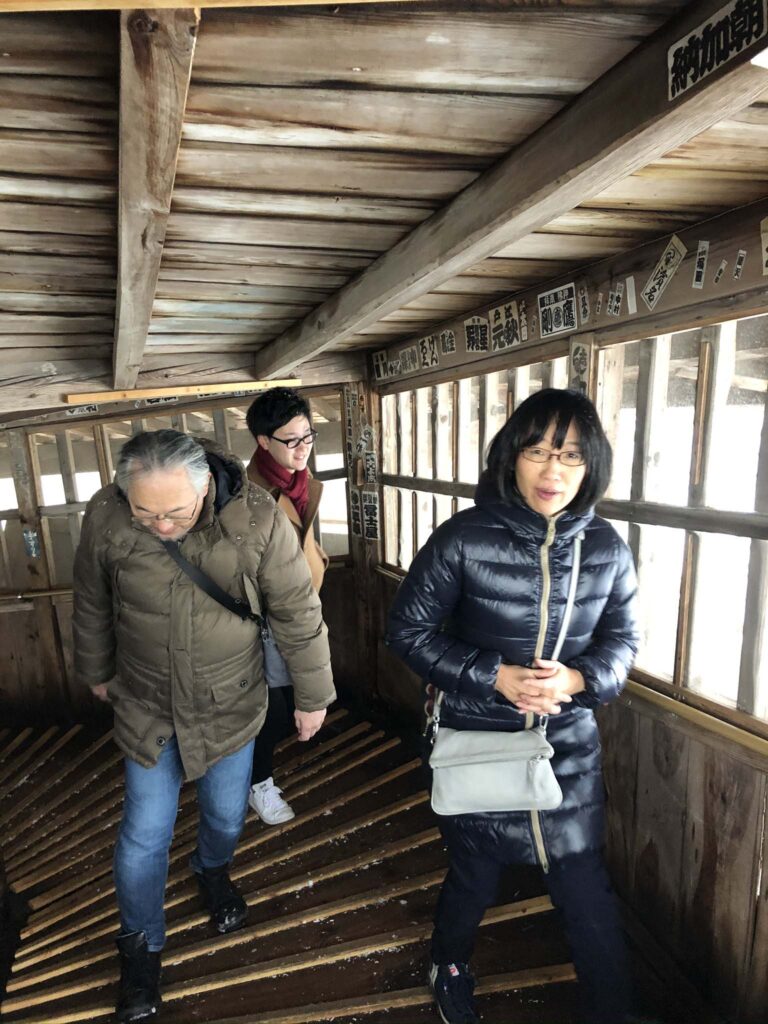 Second day – We enjoyed the Aizu specialties of Tsurugajo, Sazaedou, and Wappameshi
Second day – We enjoyed the Aizu specialties of Tsurugajo, Sazaedou, and WappameshiNight-Watching Tour is an annual event where we go on a trip looking for experiences with light we cannot get in Tokyo. If you have any suggestions or information, please reach out to our office! Please look forward to our next event! (Noriko Higashi)
World Lighting Journey
2019 Annual Report, A chief interview
2020.02.26 Erina Hosono
We interviewed Shomei Tanteidan Leader Mr. Mende this year again as an annual round up to our weekly World Lighting Journey postings in 2019 to the Shomei Tanteidan Facebook.
 Our Leader Mr. Mende looking back at the posts of the year.
Our Leader Mr. Mende looking back at the posts of the year.
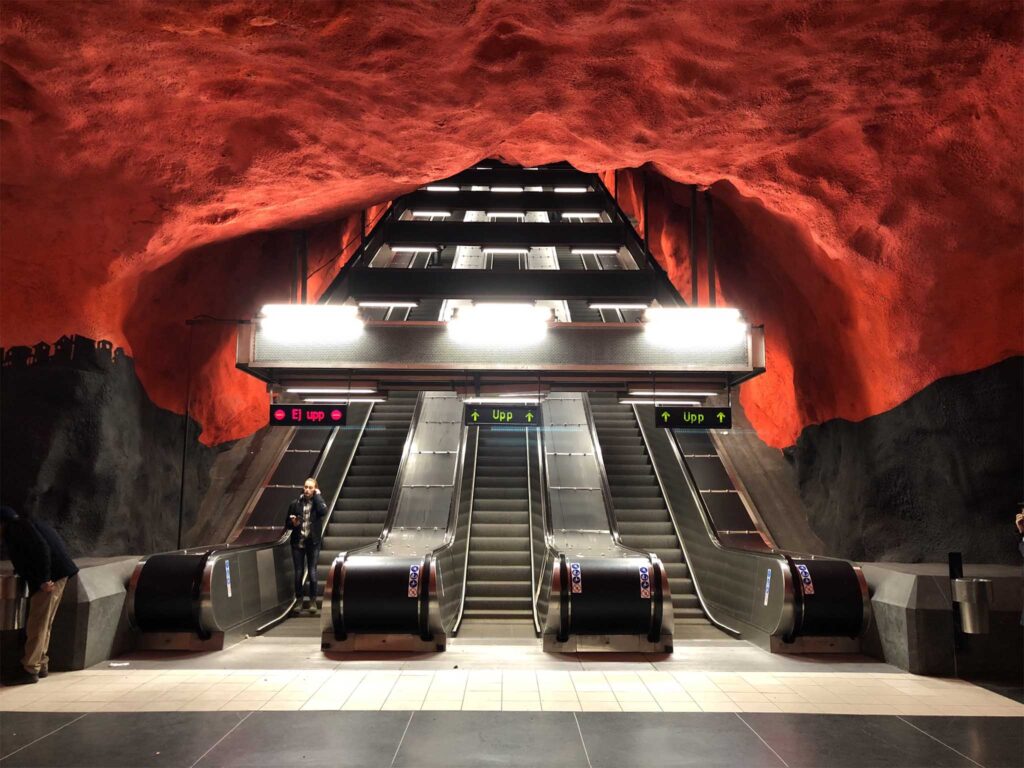 The most reacted image: Stockholm Subway
The most reacted image: Stockholm Subway
Mende:So, our conclusion from last year’s World Lighting Journey (WLJ) was “Let’s upload more natural light”, how did everyone react to that?
―It doesn’t seem that posts that featured only natural lighting was that much more popular.
Mende:So then, which photos where more popular? (Looks through the data of our 2019 Facebook postings) I see, it seem that images that show scenes that are rare or haven’t been seen by Japanese seemed to incite a bigger response.
―Mr. Lin’s photo of the subway station in Stockholm and Mr. Hattori’s photos of Italy and the Vatican had the most reactions
Mende:The photo of the subway itself is very impactful, that’s probably why it is capable of garnering such attention. I always enjoy Mr. Hattori’s photos as they always capture how people and lighting interact.
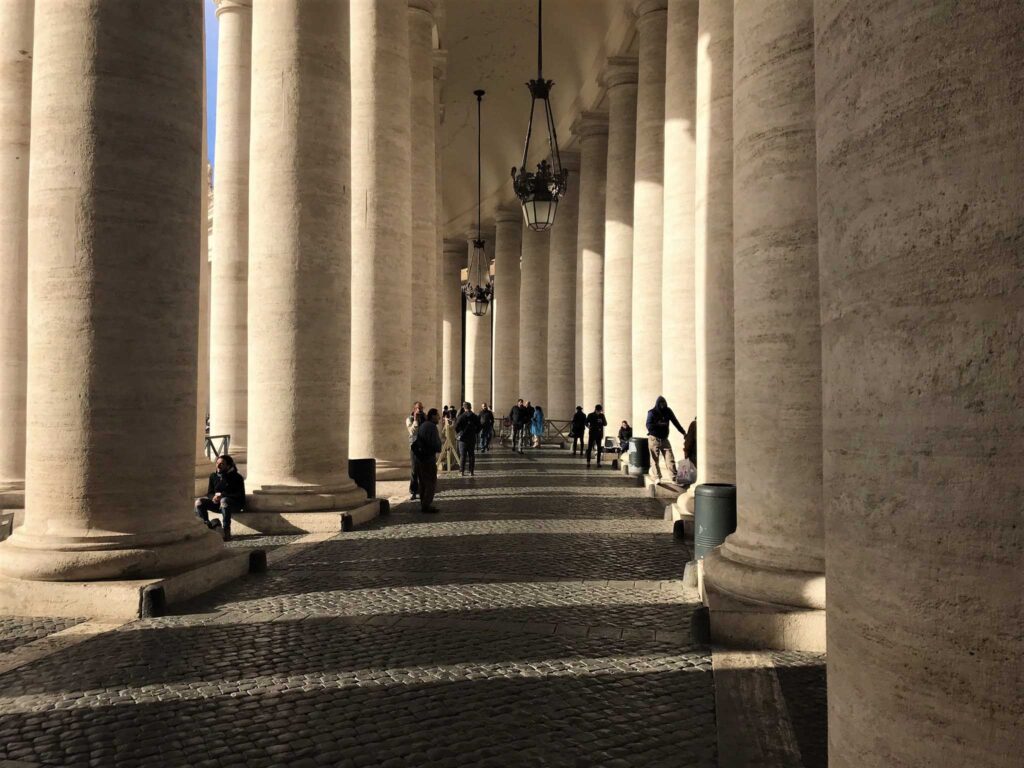 Saint Peter’s Cathedral in Vatican City, The interplay between dynamic light and shadow
Saint Peter’s Cathedral in Vatican City, The interplay between dynamic light and shadow
―Mr. Itakura’s photo taken in the air that looks like Anthony Mccall’s artwork also gathered some attention
Mende:It must have left an impression, because you rarely see places with such strong natural light in Japan. Have you heard of the Italian movie “Miracle in Milan”? There a scene where the light shines upon a plaza from between the clouds and people were moving in and out of the light as if they were actors left a lasting impression on me. This photo reminds me of that.
―Mr. Mende, show us the post that you liked the most!
Mende:I really like the photo from the Water and light installation at the Macau Casino hotel. Photos with people in it really come alive. There is some debate to whether casinos should exists but where there are casinos there comes light as well, so I think they’re heroes (chuckle). Similarly, the West Lake fountain show photo is nice as well. The light from the show itself and the light from the screens where people are trying to take a photo are create a dual layer of light and leaves a lasting impression.
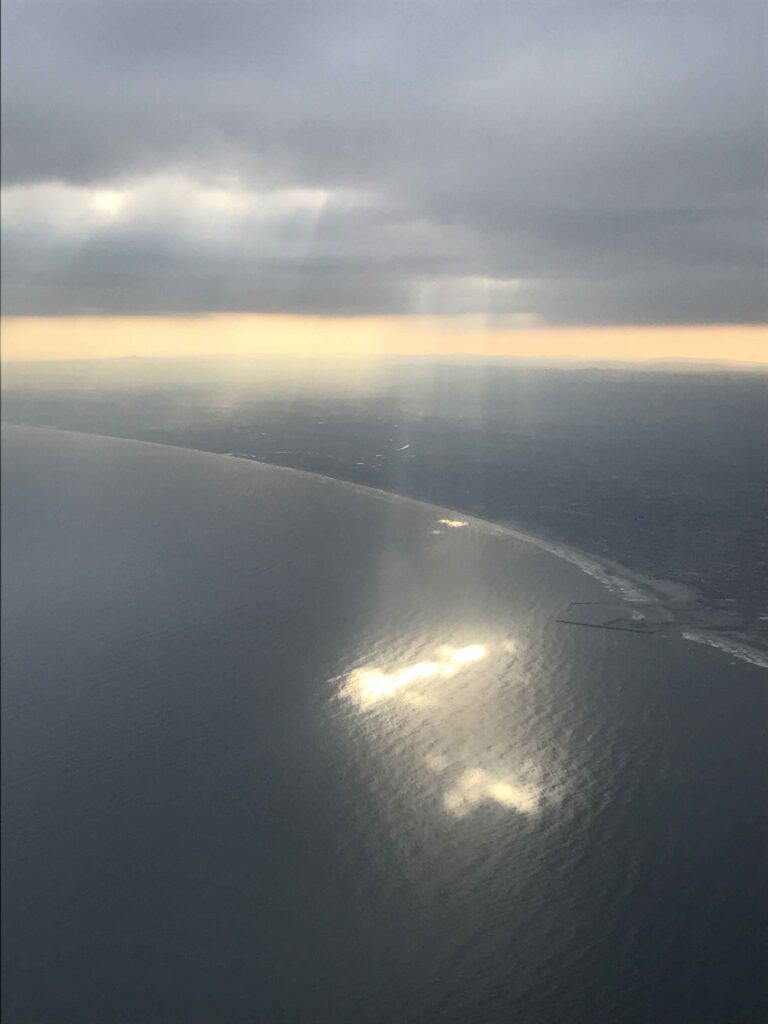 Looking out the window pre-landing at Narita
Looking out the window pre-landing at Narita
―Talking about Facebook, their individual user count is going down compared to last year and the year before, while Instagram and Twitter is seeing an increase in users.
Mende:What’s the difference?
―Facebook instigates connections between people who already know each other and my impression of it is that it’s used more to update each other on your current events in your life. On the other hand, Instagram and Twitter doesn’t require you to register your real name and you can search for topics that you like and follow users that you are interested in. It lets you dive deep into your hobbies and interests. Instagram also has a stories feature where you are able to upload photos or videos for a limit of 24 hours. It seems that the light heartedness of the features allows for people to post more.
Mende:Are there any other differences?
―When you’re looking back at past posts of an user, it’s hard to scroll on Facebook, while Instagram displays thumbnails so it’s much easier to gather a ton of information in a short span of time. It’s much easier to look back on our WLJ posts on Instagram than it is on Facebook. Twitter and Instagram also lets you search in accordance to tags on your post and you can look at posts from all around the world related to that tag. For example, you can search for #lighting and you will find many genres of photos related to lighting.
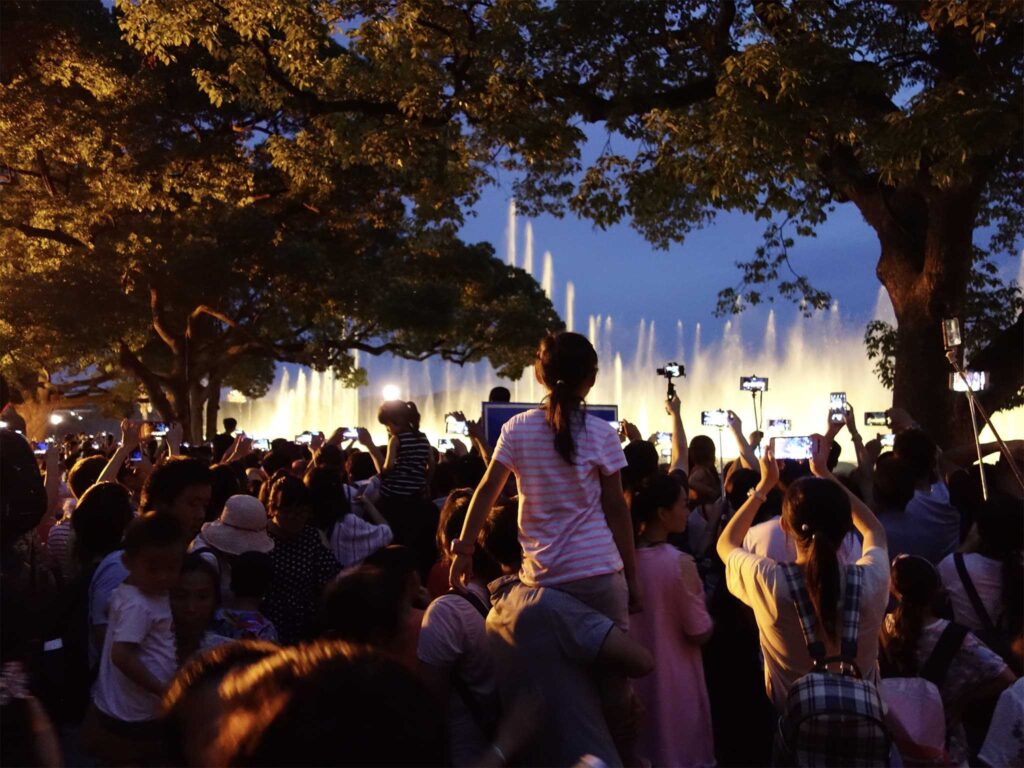 Fountain show in West Lake, China. The view of everyone trying to capture the moment is also very memorable
Fountain show in West Lake, China. The view of everyone trying to capture the moment is also very memorable
Mende: I see. It seems Instagram is a better fit for people to get to know WLJ. I want to try a bunch of different things this year. We could do something every week where we decide a theme and ask for photos to be sent to us. For example something like “The most frustrating view of the year” or something of the sort. We don’t normally think to photograph light that we dislike do we? And each person differs on the light that we dislike, so wouldn’t it be fun if we might have findings where people think “Oh, this person dislikes this light huh, I think it’s beautiful”? It also good to write down why you thought to take that photo, however short. As you keep doing that, you nurture your perspective of looking at things and that unique perspective is what is interesting. Let’s make 2020 a year where we challenge ourselves to do a variety of things. (Erina Hosono)





